33 Hellish Drawings from the ‘Compendium Of Demonology And Magic,’
 Evidence of the occult has been found throughout history in different parts of the world.
Evidence of the occult has been found throughout history in different parts of the world.Hybrid demons, cabalistic symbols, dancing skeletons, and dark spells of magic — these are only some of the occult elements that fill the pages of the mysterious 18th-century manuscript entitled Compendium Of Demonology And Magic. Though we may never know who created the book and why, there's one thing we do know for certain: this book is not for the faint of heart.
The Compendium Of Demonology And Magic
In 1775, someone — likely a worshipper of the occult — made it their business to compile a collection of astonishingly detailed illustrations of demons and magical rituals into one book. That book is now known as the Compendium Of Demonology And Magic.
Its original title was actually Compendium Rarissimum Totius Artis Magicae Sistematisatae Per Celeberrimos Artis Hujus Magistros, which roughly translates to "A Rare Summary Of The Entire Magical Art By The Most Famous Masters Of This Art."
Written in a mixture of German and Latin, the 18th-century demonic guide opens with an eerie page adorned by skeletons and a warning that reads "noli me tangere," meaning "do not touch me."
Its pages contain remarkably vivid drawings depicting over 30 kinds of beastly creatures from Hell as shown in the gallery above.
The illustrations appear to be watercolor and are mostly drawn on white, brown, and grey-green paper. The figures themselves are extremely dark and disturbing in nature but nonetheless fascinating to look at.
Among the bizarre demons, you'll find a giant red figure with black wings, large eyes, and snakes jutting out from its forehead. It's caught mid-spring, coming out of the ground with smoke and fire as it feeds on a bloody meal of what appear to be human limbs.
Another graphic demon depicted among the book's artwork is a creature so grotesque and mismatched in its anatomy that it resembles a Frankenstein experiment from Hell.
This demon has fire jutting out of its ears, large fangs, a misshapen abdomen covered in spots, and hooved feet. But the most disturbing thing about this figure is what it is doing: birthing small dragon-like creatures.
In addition to the demonic drawings, the author also drew what appear to be visual instructions that may be used as a reference in performing the mystic rituals written in the book.
Some of these scenes could be related to necromancy, which is the act of communicating with the dead to read, and possibly control, the future. There are also a few pages of cabalistic symbols.
The book's origins are obscure and its author remains unknown. But the misdated "year 1057" written on its cover suggests that whoever created the compendium was likely trying to pass it off as an ancient manuscript of sorts. The physical book is under the custody of the Wellcome Library in London, United Kingdom.
Historic Manuscripts Of The Occult
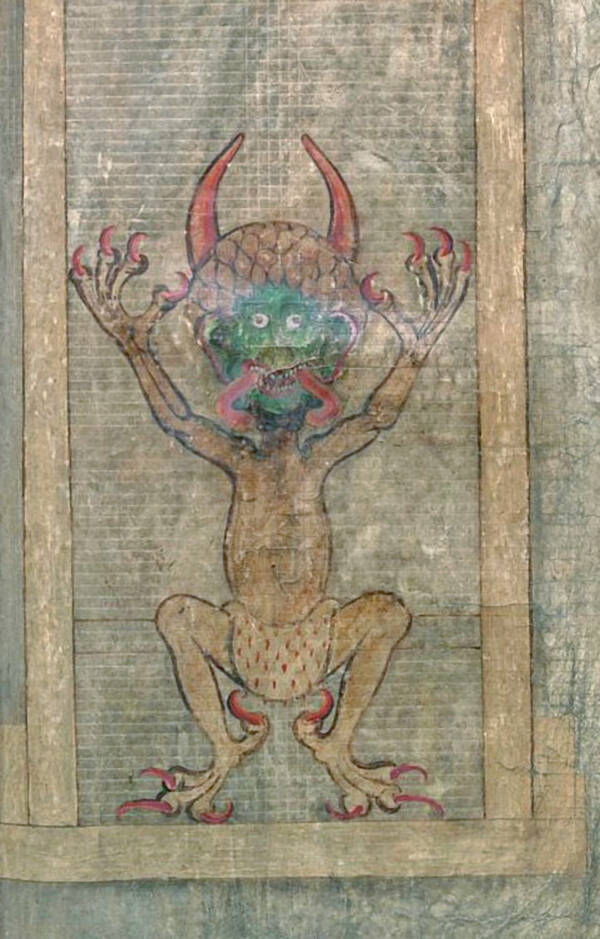
The Codex Gigas, otherwise known as the "Devil's Bible."
The Compendium Of Demonology And Magic, though entirely gripping in its vivid illustrations of satanic creatures, is not the only manuscript relating to witchcraft from earlier centuries.
In the 16th century, a Dutch doctor-turned-occult-practitioner named Johann Weyer published Pseudomonarchia Daemonum — known by its English title as the False Hierarchy of Demons — which was a similar compendium written in Latin. Its pages contained the names of 69 demons.
According to Weyer himself, he created the mystic book based on an earlier text about spirits and demons written by another practitioner, though it's unclear what work he was referring to.
Weyer's Pseudomonarchia Daemonum, which was not his first work on demonology, was declared by Sigmund Freud as "one of the ten most significant books of all time."
Even older still is the Codex Gigas, the largest medieval manuscript in the world, measuring at a whopping 36 inches tall, 20 inches wide, and nearly nine inches thick. Historians believe it likely took over 20 years to complete the book.
Could it be any smaller when the entirety of its pages contains a multitude of texts from the Old Testament and New Testament to the Chronicle of Bohemia by Cosmas?

Illustration of the demon Buer, by Luis Breton. According to Weyer's book, Buer is the president of Hell.
But most striking is perhaps the large demonic illustration that inexplicably sits in the middle of the massive book.
Due to its old age and the effects of war, the true origin of the Codex Gigas has been lost to history. But legend has it that the entire manuscript was written in a fortnight by a monk named Herman the Recluse who was nearly buried alive for breaking his vows.
To win back his freedom, the monk obliged to write a book containing all the world's knowledge overnight.
Ironically, the monk summoned the devil to help him with the herculean task in exchange for his soul, which is how the odd drawing inside the book allegedly came to be. The historic relic, now called the "Devil's Bible," sits on display at the National Library of Sweden in Stockholm.
Unfortunately, the real stories behind some of these curious manuscripts will forever remain untold.
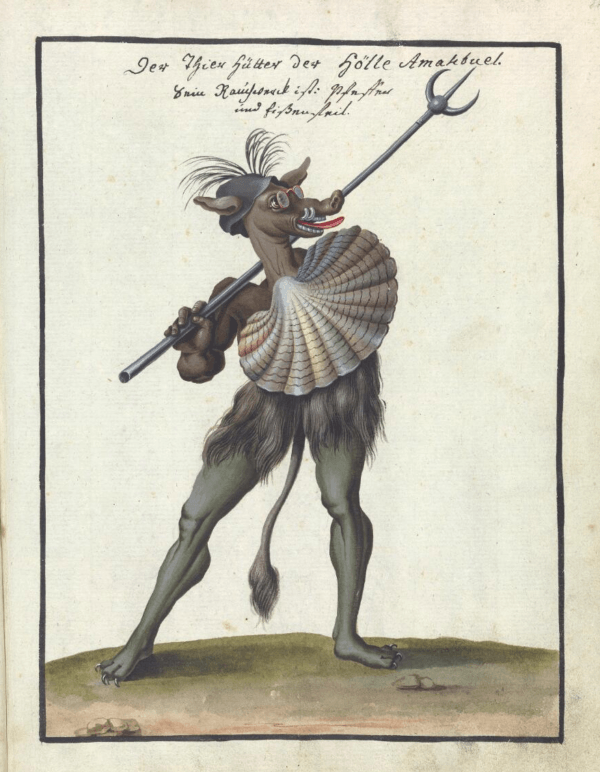
A half-boar half-demon hybrid with a clam-shell body.
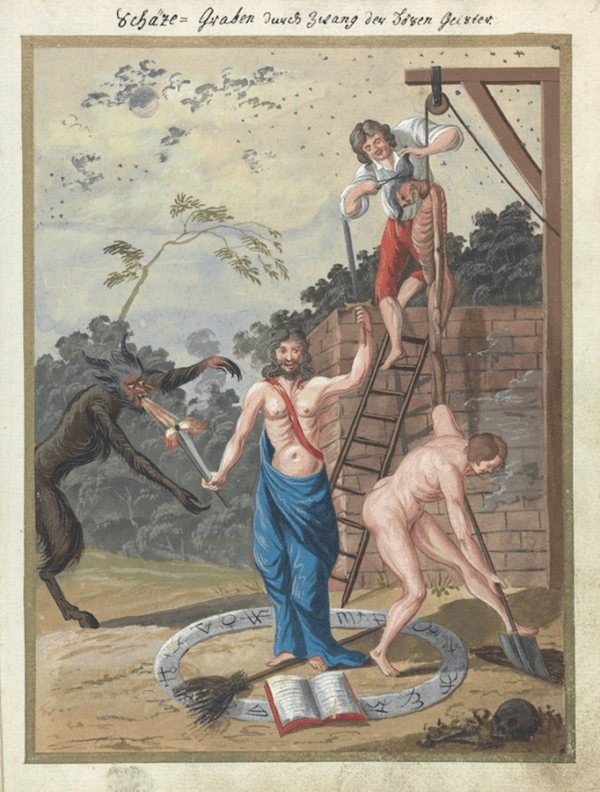
A demon appears as a man and performs a dark spell. Note the dead body being untied from its hanging pole in the background, suggesting necromancy.

Drawing of a hydra monster with mixed heads of different beasts.
Though the compendium's cover claims it's over a thousand years old, the demon book was likely written in the 18th century.
Though the compendium's cover claims it's over a thousand years old, the demon book was likely written in the 18th century.
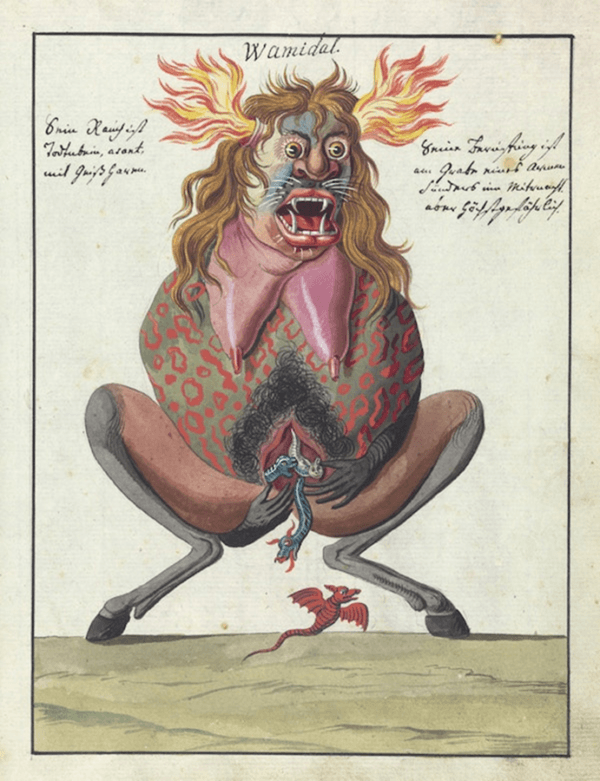
Illustration of a demonic beast as it gives birth to small dragon-like creatures.
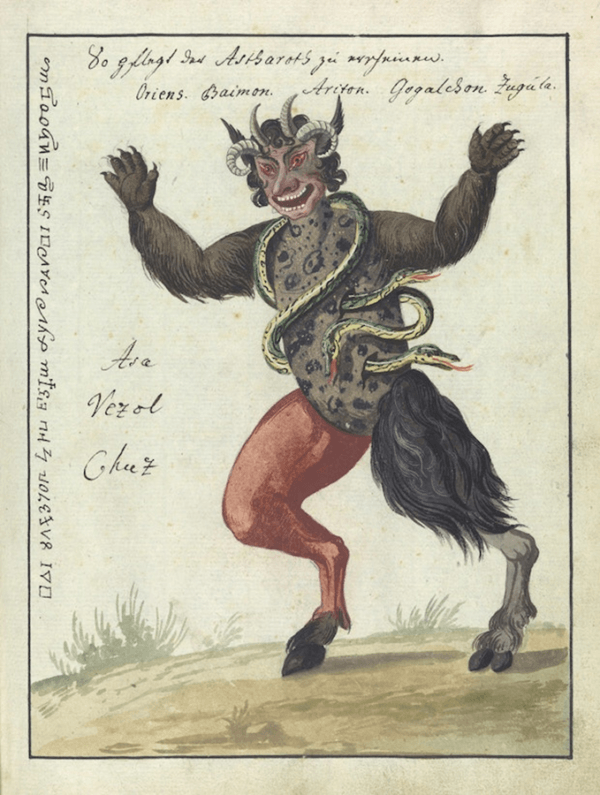
A centaur-like demon with snakes wrapped around and through its body.
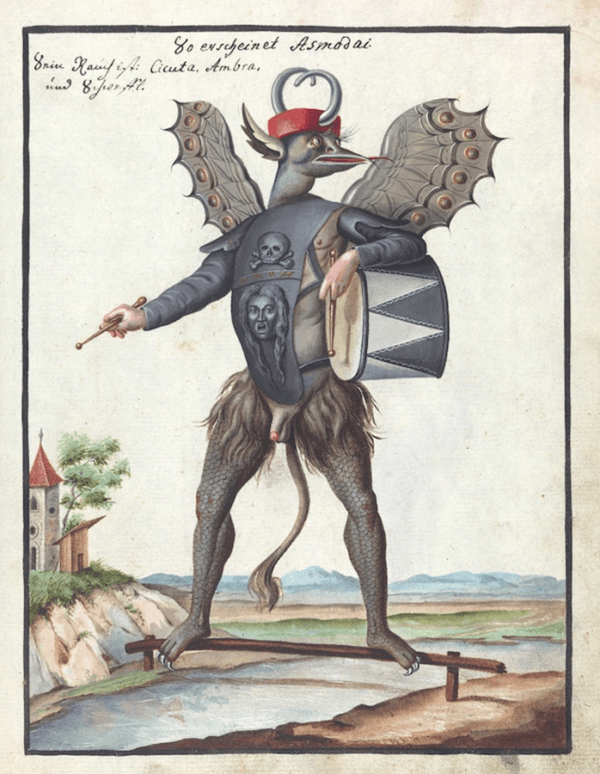
Drawing of a demon with the characteristics of a duck and a butterfly, suggesting a hybrid beast from Hell.

Separate drawings of four creatures from Hell.

The title page of the Compendium of Demonology and Magic is adorned with skeletons and a sharp warning in Latin that reads "Noli me tangere," which translates to "Do not touch me."
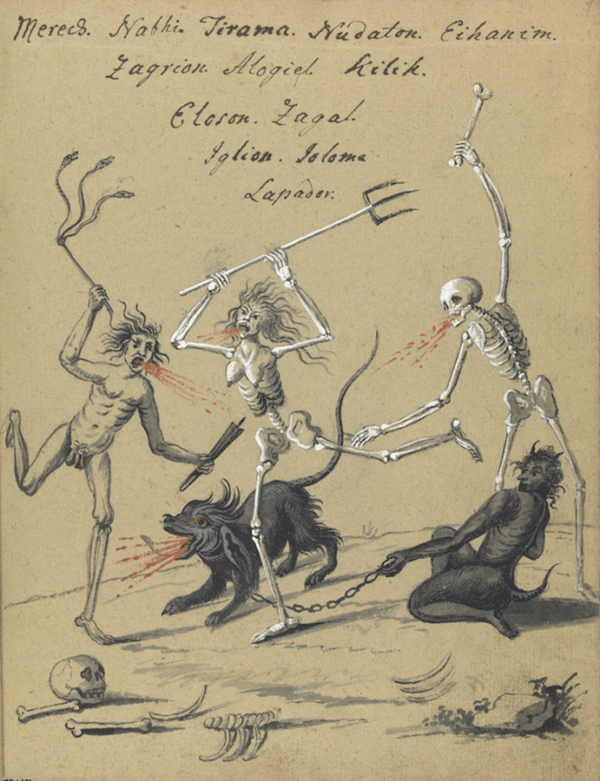
Illustration of dancing skeletons, possibly representing raising the dead.
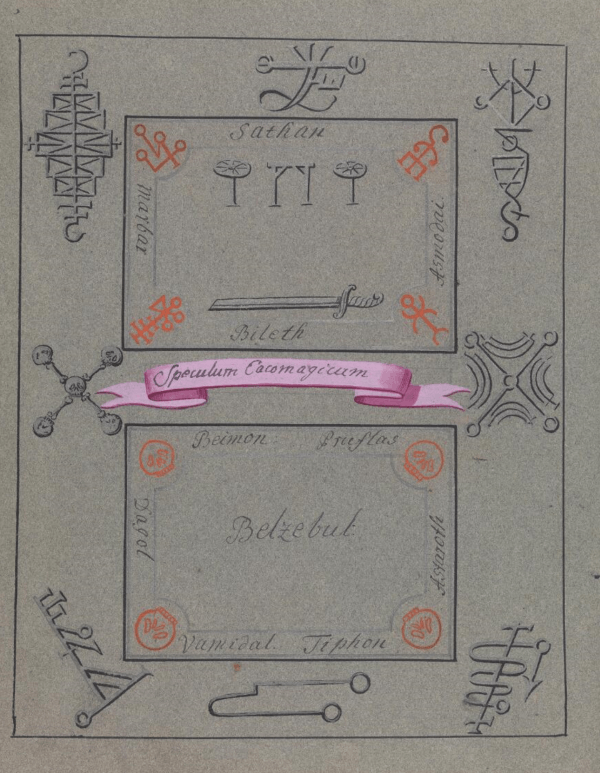
The true origins of the compendium are still unknown centuries after its creation.
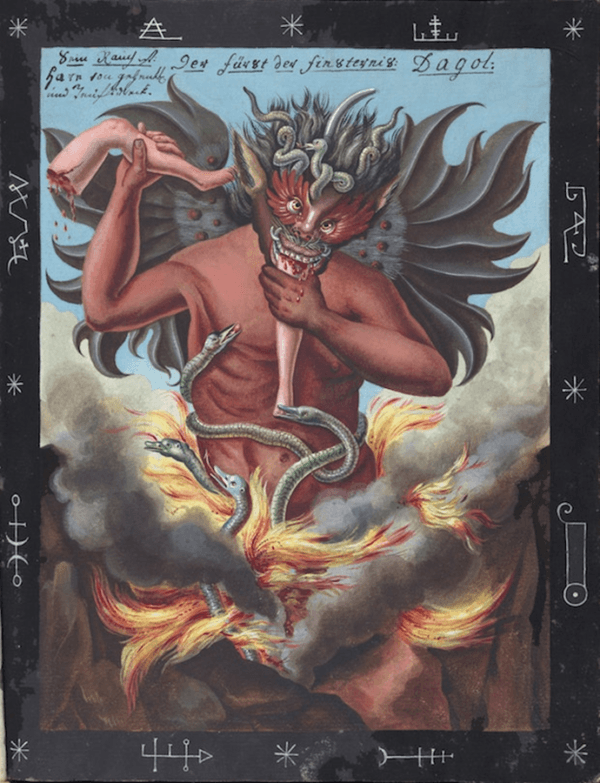
A gruesome depiction of a giant demon feasting on human limbs as it rises from the depths of Hell.

Drawings of small yet disturbing winged demons.
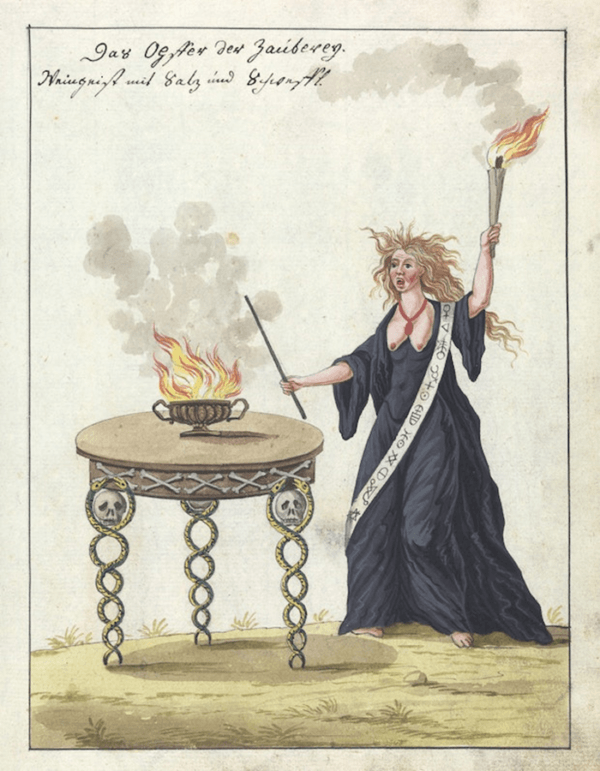
A depiction of a witch in the midst of casting a spell.

Illustration of a man who appears to be attempting a spell on a grave.
Many parts of the Compendium of Demonology and Magic feature necromancy, the act of communicating with the dead to read and alter the future.
Many parts of the Compendium of Demonology and Magic feature necromancy, the act of communicating with the dead to read and alter the future.

Scene of a giant bird demon with wings as it wreaks havoc on humans.
Perhaps this demon was meant to illustrate the harm that the compendium's pages can inflict upon one's enemies.
Perhaps this demon was meant to illustrate the harm that the compendium's pages can inflict upon one's enemies.

Illustration of a demon with a dragon head and human body parts. It's by far one of the strangest demonic creatures in the book.

The study of demons, or demonology, existed throughout history in different parts of the world.
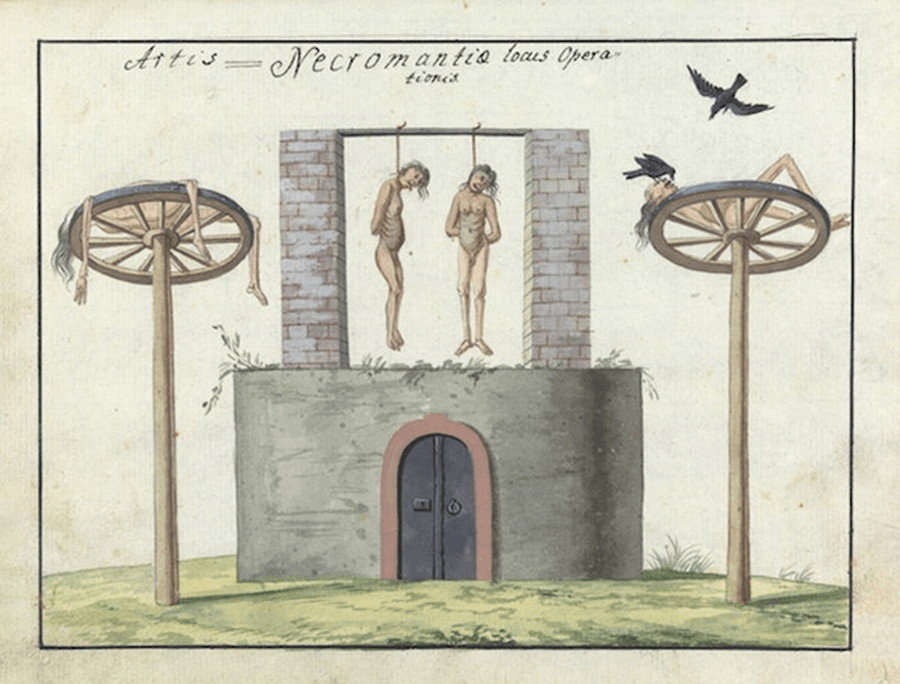
An ugly depiction of what appears to be a corpse mill, possibly to be used for necromancy.

Cabalistic symbols that adorn a few pages of the book. Many of the symbols remain unidentified to this day, although this page seems to contain symbols for the moon and other planets.

Illustration of a limbless demon as it somehow carries a bloodied weapon.
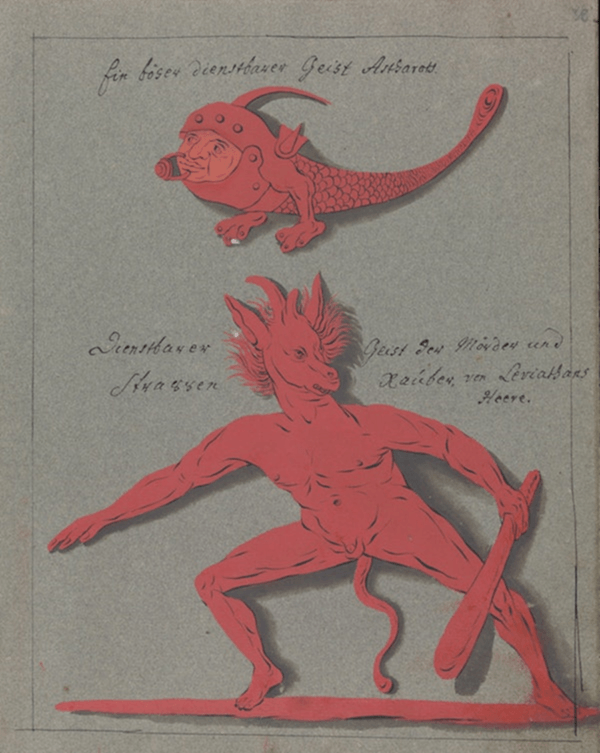
A nude demon with a very horse-like appearance.
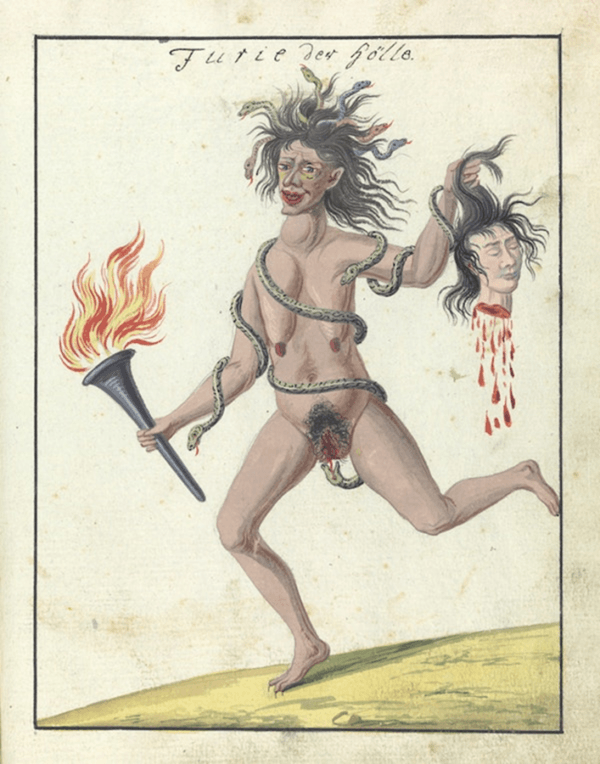
A bloody depiction of what could be a witch running naked with her body wrapped by a serpent. She carries a severed head in one hand.
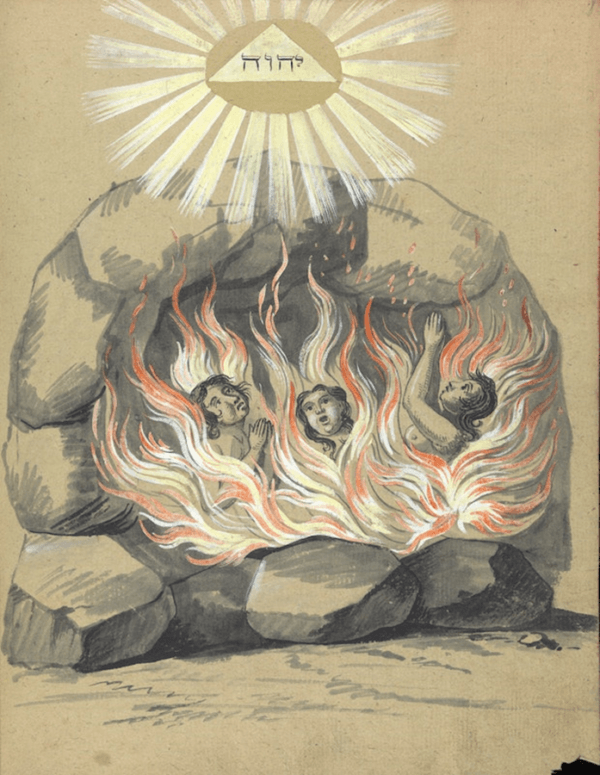
One of a handful of tamer images in the compendium, though an understanding of the text might alter that perception.
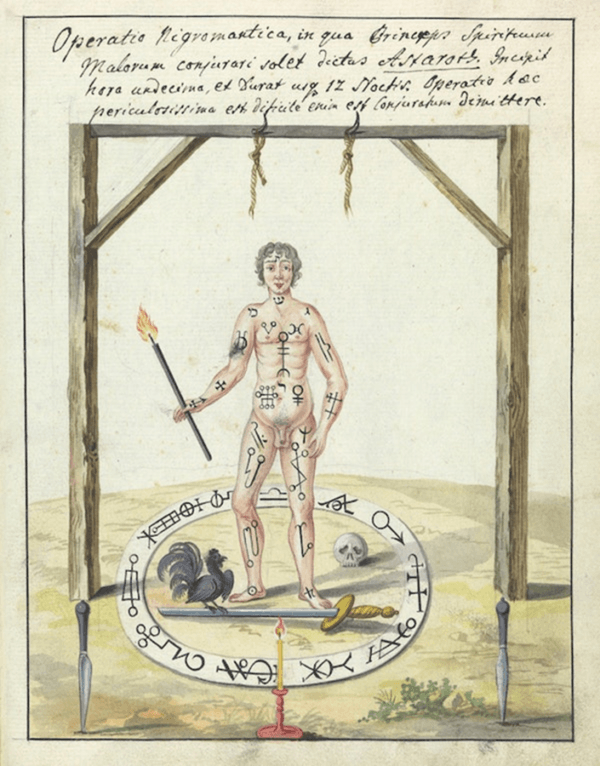
Depiction of a naked man covered in symbols as he appears to cast a spell.
This could be visual instruction on how to perform the book's rituals.
This could be visual instruction on how to perform the book's rituals.
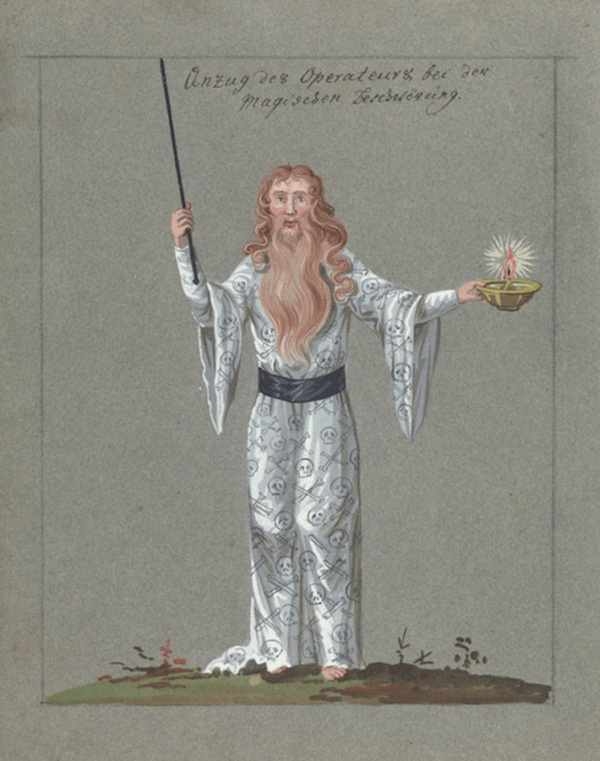
A practitioner of the occult.
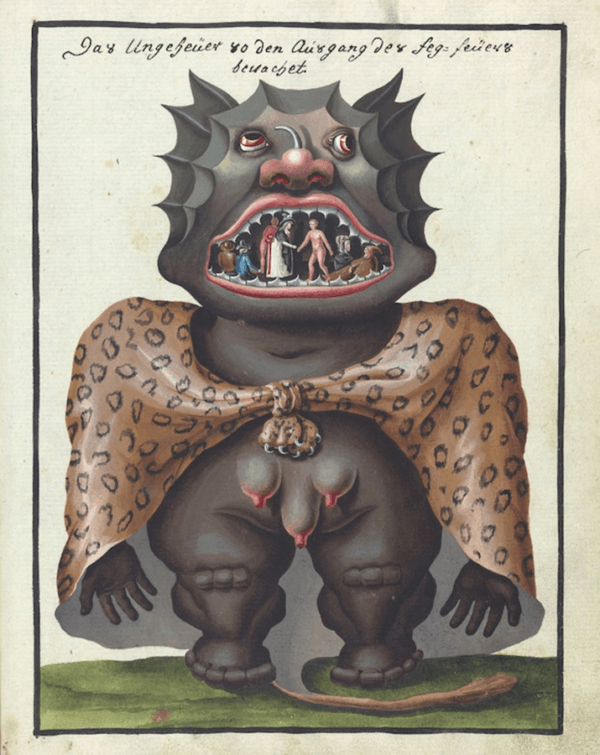
Strange illustration of a large triple-breasted demon with figures inside its mouth.
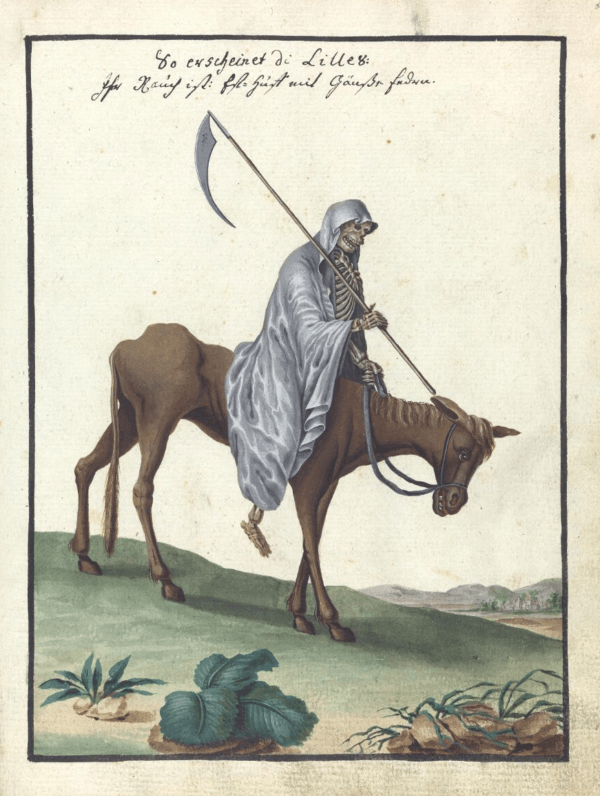
A grim reaper riding upon a tired horse. Could it be a symbol of the arrival of death?
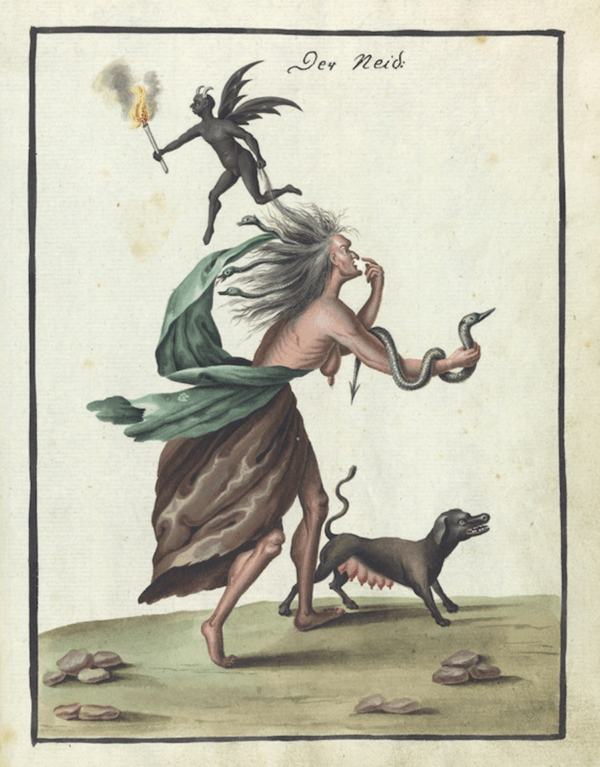
A naked witch carrying a snake perfectly embodies the bizarre content of the book.

An inexplicable humpback figure is one of the milder drawings in the compendium.
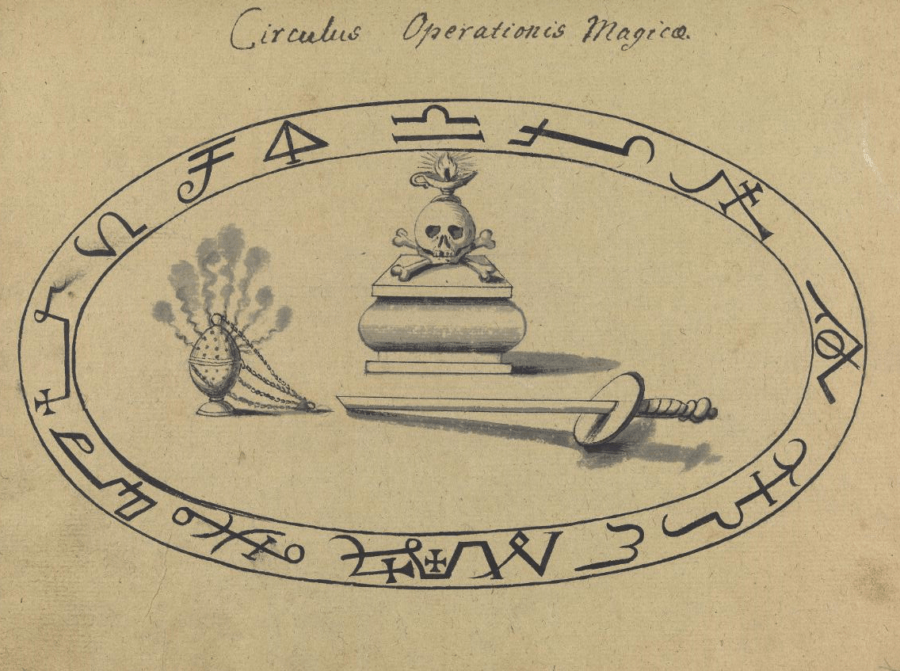
Illustration of a spell-binding circle to cast enchantments of darkness.
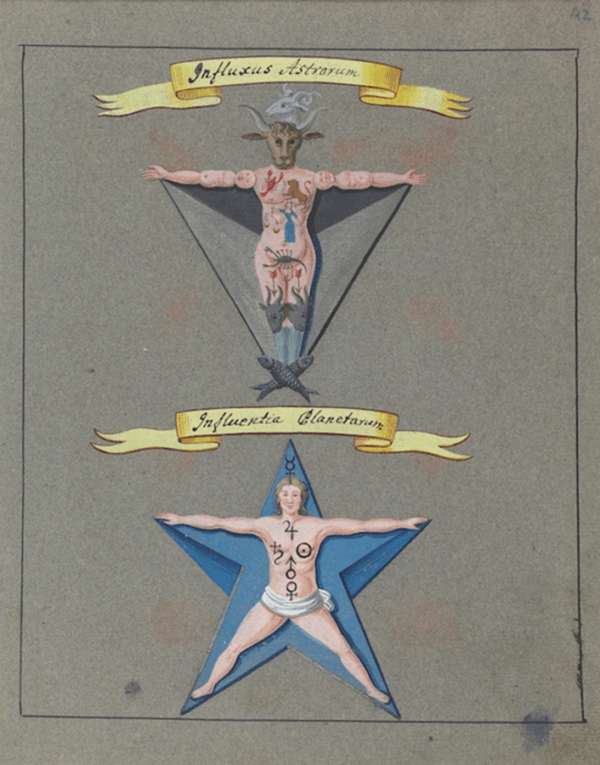
Although the origins of the book are unclear, the compendium stands out due to its vivid demonic art.
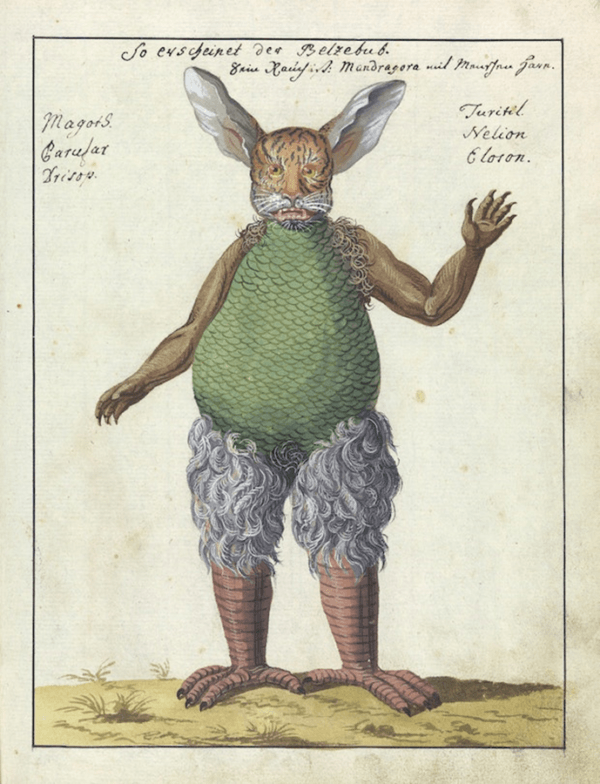
An odd demon with the face of a tiger and ears of a rabbit.

More cabalistic symbols from the book, including one labeled "Caracter Belzebubs."
No comments: